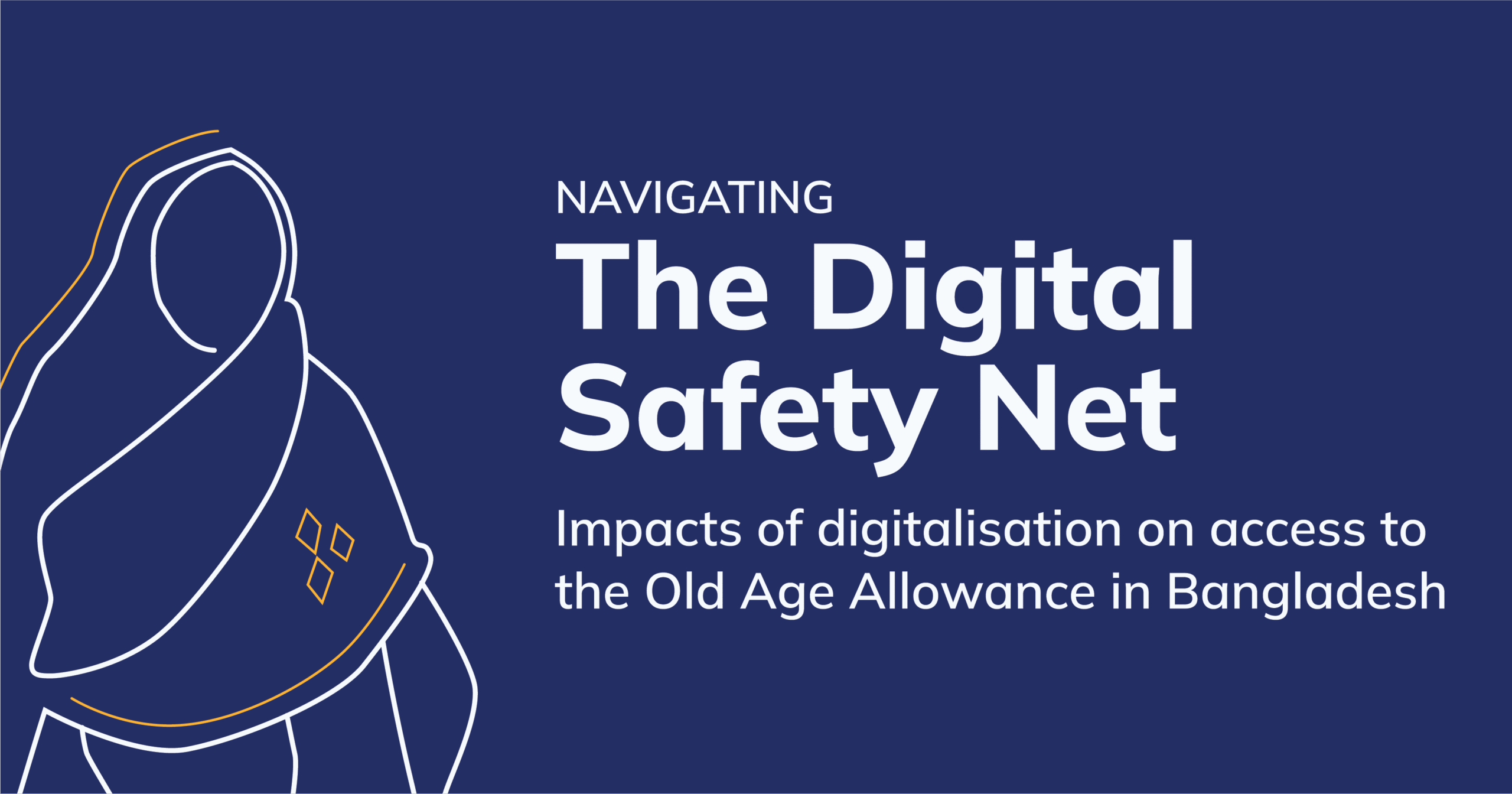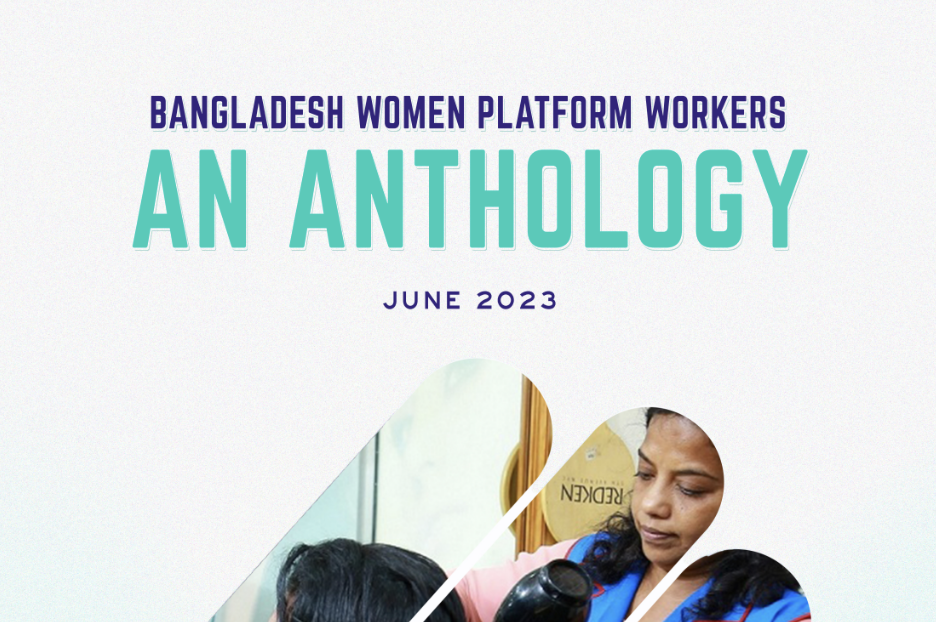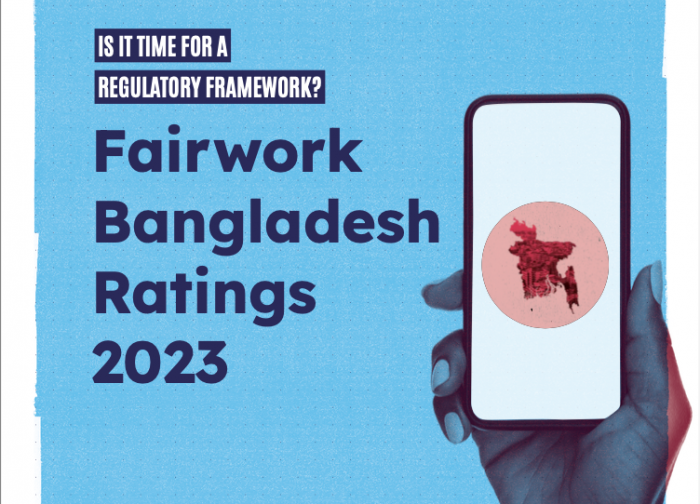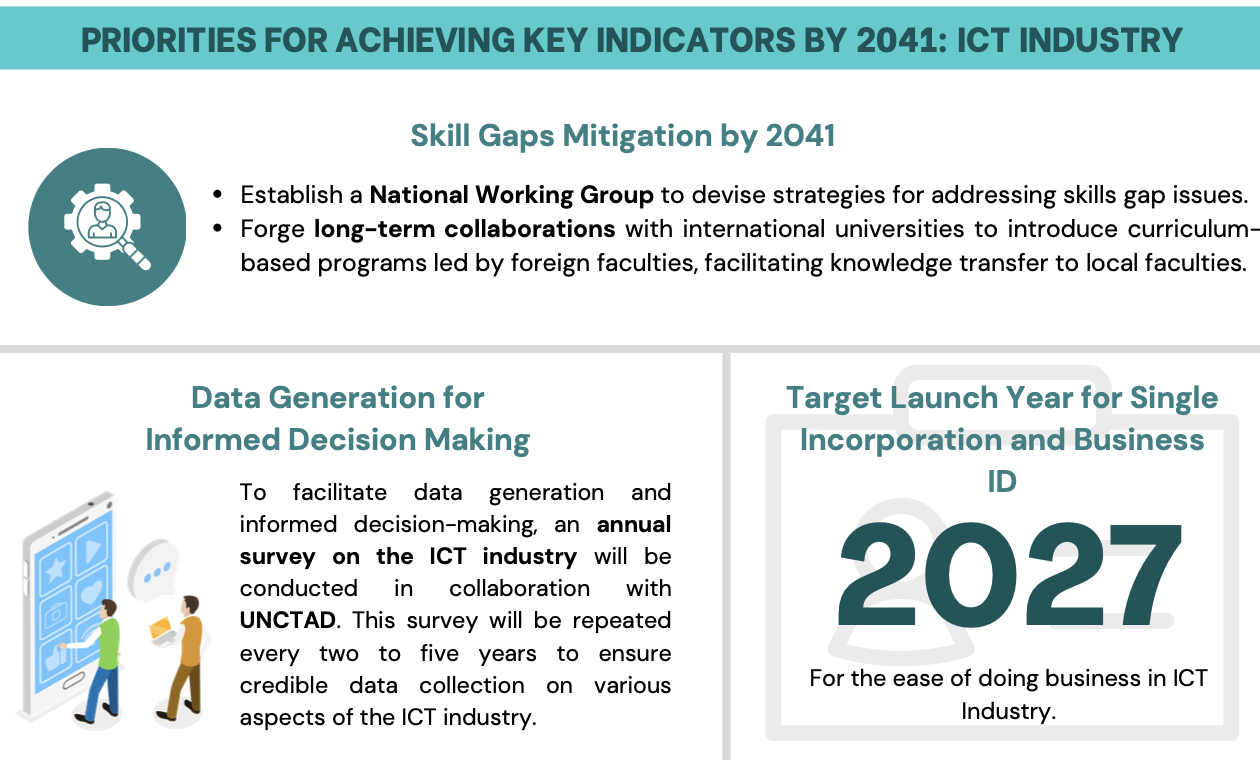Policy insights from research on digitalization, data relations, and inclusion in Bangladesh’s social protection systems.
Executive Summary
Bangladesh’s Old Age Allowance (OAA) program—one of the country’s longest-running social safety nets—was fully digitalized in 2021. Digitalization has improved administrative efficiency, reduced leakage, and expanded access to payments. However, it has also introduced new forms of exclusion for elderly beneficiaries with low digital literacy, who now depend heavily on intermediaries to access their entitlements.
Based on collaborative research by DataSense and the University of Edinburgh, this policy brief examines how digitalization has reshaped access, accountability, and data governance in the OAA system. It highlights key gains in efficiency, persistent challenges in transparency and data protection, and practical policy measures to ensure Bangladesh’s social protection systems remain inclusive, transparent, and secure.
At-a-glance
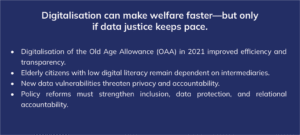
The Pre-Digital System: Paper-Based Processes and Constraint
♦ Fully manual registration, verification, and bank-based payment systems.
♦ Elderly recipients queued for hours; record management was slow and prone to error.
♦ Low transparency in selection and weak grievance redressal
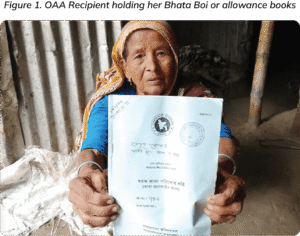
The Digital Turn: Efficiency, Mediation, and New Risks
♦ The OAA was among the first safety nets fully integrated into the Digital Bangladesh MIS.
♦ Online registration through mis.bhata.gov.bd now links to the National ID database.
♦ Backend systems enable direct fund transfer and inter-agency coordination.
Benefits:
✅ Faster registration and disbursement
✅ Reduced leakage and travel time
✅ Flexible access to payments through MFS
Challenges:
⚠️ Elderly beneficiaries still depend on local officials, family, and agents for access.
⚠️ Personally identifiable information (NID, phone, MFS) remains visible on local websites.
⚠️ Algorithmic processes amplify small data-entry errors and reduce local discretion.
⚠️ Digital grievance systems (GRS) remain underused due to low awareness.
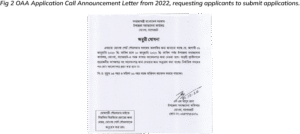 Key Recommendations
Key Recommendations
- Improve Digital Access and Inclusion
• Provide tailored digital literacy and awareness programs for elderly citizens.
• Simplify application interfaces and offer guided in-person support at Union Digital Centers. - Strengthen Data Governance and Security
• Enforce anonymization and clear data-sharing protocols at every stage of the OAA process.
• Review publication of beneficiary information on local government websites to safeguard privacy. - Enhance Fairness and Transparency
• Introduce data-validation checkpoints to detect and correct data input errors early.
• Combine digital verification with transparent local audit trails. - Ensure Accessible Citizen Feedback
• Roll out Interactive Voice Response (IVR) systems for grievance redressal.
• Increase awareness and usability of the GRS portal among elderly recipients.
Data Relations: Human and Digital Infrastructures in Practice
Digitalization has turned the OAA system into a network of data relations, where each step—application, verification, disbursement—creates and circulates personal data across multiple actors and platforms.
These exchanges blur the boundaries between human and digital systems, producing new accountability gaps and opportunities for error or misuse. Strengthening this hybrid infrastructure will require coordinated standards for data protection, user support, and ethical intermediation.
Conclusion: Towards Inclusive and Accountable Digital Welfare
Digitalization of Bangladesh’s OAA program has improved administrative efficiency and reduced leakage, but it has not yet bridged the divide between technological capacity and citizen accessibility. For elderly beneficiaries, inclusion depends on digital literacy, local mediation, and secure data practices. To make digital social protection both faster and fairer, policy efforts must focus on relational accountability, ensuring that every point where data is entered, verified, or shared is also a point where rights and protections are enforced. Sustained investment in user training, ethical data governance, and design for accessibility will determine whether Bangladesh’s digital safety net enhances or undermines the dignity of its citizens.

